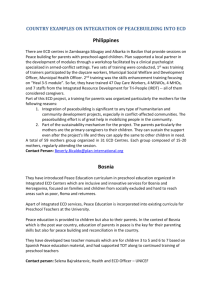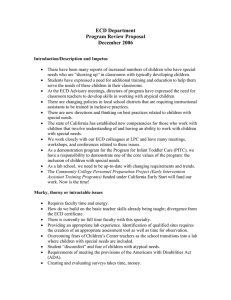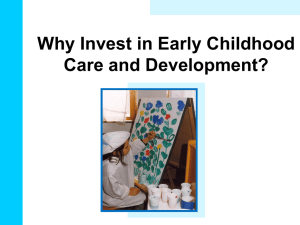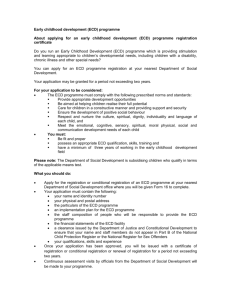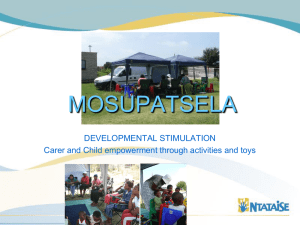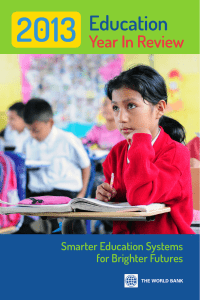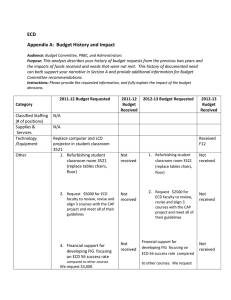Department of Education and Childhood Development
advertisement
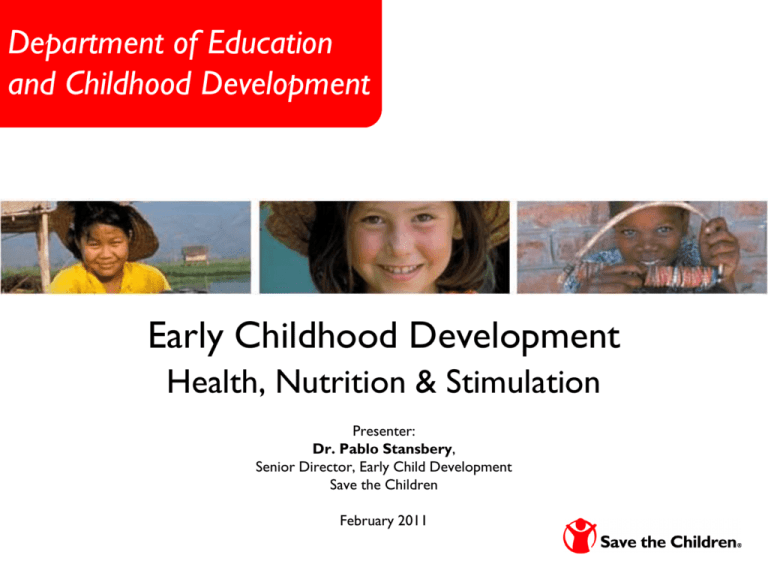
Department of Education and Childhood Development Early Childhood Development Health, Nutrition & Stimulation Presenter: Dr. Pablo Stansbery, Senior Director, Early Child Development Save the Children February 2011 What is ECD? ECCD? ECCE? Age Appropriate & Developmental Domains 1. Physical well-being & motor development 2. Social and emotional development 3. Approaches to learning (curiosity, perseverance, interest in learning) 4. Language development 5. Cognition and general knowledge (ABCs, 123s) Pre-Primary Enrollment (2010) World Developing Countries Developed Countries Transition Countries Sub-Saharan Africa Arab States Central Asia (%) 41 36 79 62 15 19 28 ECD: What does science tell us? 1. Early experiences matter 2. Social Referencing 3. Developmental Domains Normal Brain Development Source: Newsweek Special Edition, 1997 At-Risk Development Source: Newsweek Special Edition, 1997 Language and Cognition Disparities in Early Vocabulary Growth Cumulative Vocabulary (Words) 1200 College Educated Parents 600 Working Class Parents Welfare Parents 200 16 mos. 24 mos. Source: Hart & Risley (1995) Slide by The National Scientific Council on the Developing Child Child’s Age (Months) 36 mos. Maternal Language Promising Practices: ECD-Health Program Interventions: Developing an Essential Package for Young Children Affected by HIV/AIDS Frameworks & tools related to healthy child development building off existing OVC resources School Health and Nutrition Inclusive: Girls & Boys Active Learning: Play, Visual and Performance Arts Community-based Inclusion 0- 2 Year-Old Early Learning Activities ECD Service Delivery Continuum: Inter-Ministry Examples Adolescents Youth clubs and teams SecondaryECD Partnerships Pregnancy Prenatal classes & Medical Care Birth to 30 days •Lactation consultant •Early health care •Breastfeed 1 month to 3 years 3 to 4 years 5 to 6 years Pre-primary •Child health & • Conditional cash transfer classes (CCT) nutrition programs •Food security • Visual & Performance Arts 6 to 8 years School-based transition programs Health Fairs Global Food Crisis Food prices increasing Less people able to access adequate food supplies INCREASING MALNUTRITION Economic Crisis Decreased Aid from developed world Decreased NGO/non-profit financing Global Trade decreasing Unemployment (in developed and developing world) increasing Remittances decreasing Guest workers sent home or leaving due to diminishing employment opportunities (increased burden on developing countries) Increased malnutrition and less help/assistance Increased malnutrition in 0-5 year old children Adopted from Hommel, 2010 Poor physical/ mental development Decreased educational outcomes Decreased Human Capital FUTURE SURGE IN POVERTY Increased population of unskilled, uneducated adults entering the labor market in 15 – 20 years ECD Summary 1. 2. 3. 4. Ages and Stages School Feeding* Poverty reduction (MDGs) Integrated service delivery* 5. Parents & Community 6. Prevention, promotion, & community case mangt. Interested? Please contact us! Pstansbery@savechildren.org


